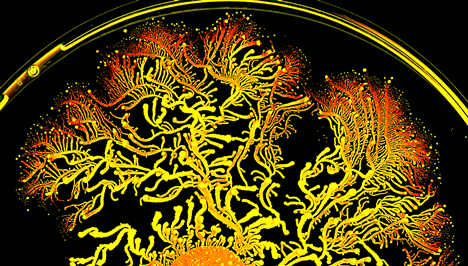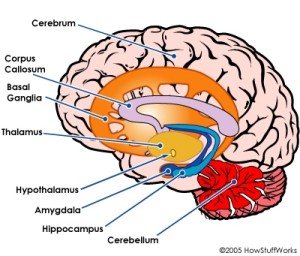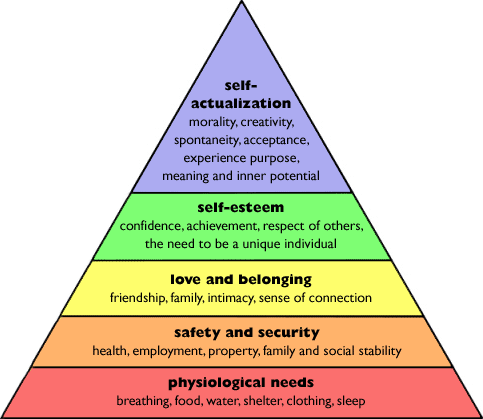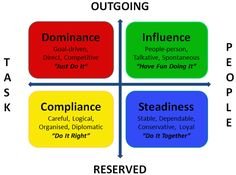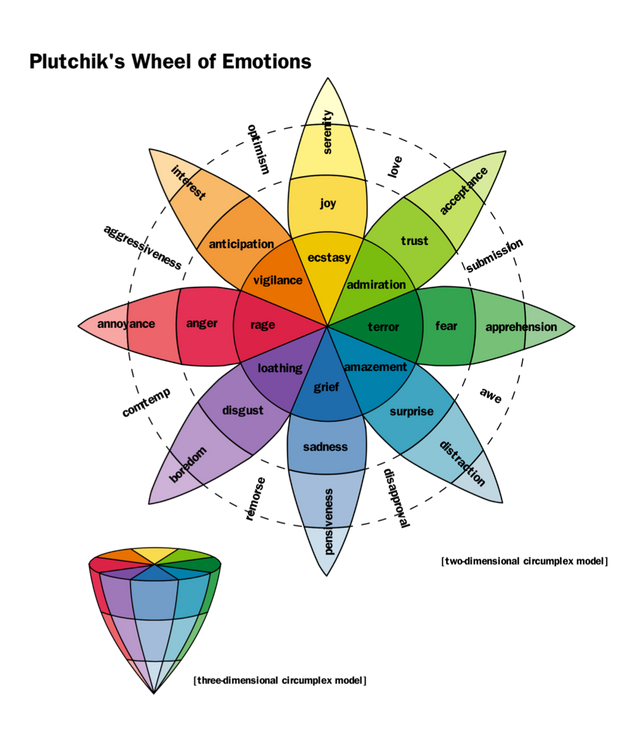Is Intelligence an Algorithm? Part 5: The Intelligence of Emotions
In this essay I will discuss how emotions are part of the natural intelligence algorithm. I will also indicate how an artificial equivalent of emotions could be of benefit to an artificial intelligence. The topic of how to deal in an intelligent way with your emotions will be the topic of the next essay.
Background
In the previous posts in this series of “Is intelligence an algorithm” I have exposed my hypothesis that intelligence functions as a kind of algorithm (see part 1 of this series). Part 2 related to cognition, (pattern) recognition and understanding. Part 3 explored the process of reasoning, which is necessary to come to identifications and conclusions and is also a tool in the problem-solving toolkit. In part 4 I discussed how we identify and formulate a problem; how we plan a so-called heuristic to solve it, how we carry out the solution and check if it fulfils our requirements.
This article is written for those people who wish to understand more about the innate intelligence associated with emotions (this essay), ultimately in order to be able to deal better with emotions and not overwhelmed by them (next essay).
Many psychologists have written about emotional intelligence or have described what emotions are. It is not my purpose to summarise what they have said. Rather I would like to show how emotions fit in the intelligence algorithm I have been describing before. Note that nothing of what I assert is necessarily so. I am formulating a hypothesis and try to convince you of its plausibility.
In human interactions decisions sometimes seem to be based on irrational considerations, which appear to deviate from the rational process of the intelligence algorithm as set out in the previous posts. In this post I will try to argue that emotions are an integral and vital part of the intelligence algorithm. What appears to be irrational is merely a different aspect of intelligence in function. So let’s try to decipher what kind of mechanism or algorithm is involved in emotions.
Where and when
Emotions are formed and stored in the in the part of the so-called “limbic system in the brain” called the “basal ganglia” in the brain, more specifically in a part thereof called the “amygdala”. It is also in the basal ganglia that fixed action patterns of immediate response to emotions are stored and released whenever necessary.
image from http://people.howstuffworks.com/swearing.htm/printable
When we make an observation the first percept is essentially neutral. It is only when we interpret the thought associated with the observation, that we colour the observation, that we interpret it. This thought-based identification called apperception then leads to the triggering of emotions.
Imagine you see a wolf. First your brain identifies that it is a wolf. That part of the apperception is still neutral. It is only when we interpret the context, that an emotion can be released. If it is a wolf in a book or in a cage, our first emotions triggered will not be fear. If it is a wolf in nature walking freely at a visible distance from us, that our brain will interpret this specific combination as being related to imminent danger. This will go so fast that these thoughts won’t even be articulated in words, but the non-verbal interpretation needs to happen before the basal ganglia can release a so-called fixed action pattern, which we call an emotion, in this example fear.
So the questions why we have emotions and what the evolutionary advantage is, can be answered quite simply: Because we can afford to go through the rational steps of ontologising weighing and finding an appropriate heuristic in the normal way. The emotion is like a flickering light on our dashboard, a monitor warning us that there is something wrong, that action is imminent and that we can’t reflect on an action but need to follow a fixed action pattern. However sometimes emotions give false signals and how to recognise these false signals will be the topic for the next essay. The next essay will also give tips how to control emotions and use them to our advantage. To understand emotions we have to try to build a more complete ontology of them and abstract generalised patterns therefrom. This is the topic of the present essay.
What are emotions?
As I just identified emotions are the fixed action patterns that are released as a result of internal and external monitoring: It is a dashboard indicator that lights up to make us aware of an imminent situation, which may have repercussions for the system we are. Emotions show whether a desired state has been reached or not in comparison to the preceding (status quo) state. Emotions also show whether it is likely that a desired state will be reached or can be maintained, which we call anticipation. Let me illustrate this with regard to a few basic emotions: fear, sadness, anger, joy, excitement, jealousy and awe.
- Fear is the anticipation that a desired state may not be reached or cannot be maintained.
- Sadness is the finding that a desired state has not been and/or cannot be reached or maintained.
- Anger arises when the action of a person or thing forms an obstacle to reaching or maintaining a desired state.
- Joy is the finding that a desired state has been reached or maintained.
- Excitement is anticipation that a desired state is likely to be reached.
- Jealousy arises when we compare our status quo with that of someone else and start to desire that state with the uncomfortable anticipation that we might be incapable of reaching that state. It is also an indicator that there may be a better state than the one we have reached.
- Awe arises when we admire the better state or achievement of someone else without desiring to reach that state, because we are convinced that we cannot reach that state anyway.
Thus here above we have classified emotions in terms of positive and negative (possible) outcomes.
Emotions can therefore be defined as indicators to notify us of our state in comparison to a different (possible) state. In this sense they are useful as elements for an algorithm. Algorithms also need to monitor and assess if a given state has been reached and inform the user and itself by feedback so as to be able to progress to the next step. In designing artificial intelligence we also need such indicators. We may not call these emotions, but in fact these internal checks are artificial emotions.
Emotions are therefore useful elements which can help a system to find its way in a complex environment to achieve a complex goal, which is exactly ben Goertzel’s definition of intelligence. Emotions protect us; show us when to advance and when to retreat.
Personality type ontology
Most people are capable of having the same types of emotions, but not necessarily in the same degree or under the same circumstances. In most cases men and women particularly differ in this respect. Then there are stratifications of people in different types such as being based on their level of accomplishment (in analogy to Maslow’s pyramid), R.A.Wilson’s typing of viscerotonic, musculotonic and cerebrotonic types and the DiSC profile by Marston.
Maslow's pyramid of needs. Source: http://needsforlifestagessmhs.weebly.com/maslows-pyramid4.html
Since emotions are linked to needs and desires a correspondence map with hierarchy of Maslow’s pyramid can be made. Fear relates to the level of physical needs such as shelter, food etc. At the next level of economical and social safety anger is the more prevailing emotion. The next level of Love and belonging correspond to joy. The level of esteem corresponds to excitement and the level of self-actualisation to serenity and equanimity. Feelings of superiority and inferiority, dominance and submission are associated with the levels of safety and esteem.
Another useful scheme for stereotyping people is the DiSC scheme used to type managers. Real people however often form a mix of the stereotypes I am going to describe, so don’t take these stereotypes too seriously. Don’t think I judge people in this way either, these are just traditional stereotypes described in various sources. It is by no means my intent to be condescending toward anyone.
The DiSC model stratifies people along two axes: The introvert-extrovert axis and the people- versus task-oriented personalities. DiSC stands for Dominance, Influence, Steadiness and Conscientiousness.
DiSC model image source: https://nl.pinterest.com/Stevros/disc-%2B/
Dominant personalities are extroverted and task oriented. The typical military dictator. They correspond to Wilson’s musculotonic type and the noblemen in the ancient caste system. Their behaviour is intimidating, based on feelings of power and superiority. They may force to achieve their goals not always taking into account the effects on other people.
Influence type personalities are also extroverted but are more people oriented. They are said to have better communication skills and inspire people. Often they strife for progress. They correspond to the class of business men, the citadins or bourgeoisie in the caste system. they are excited, full of energy seeking enjoyment in life. Their physical constitution in Wilson’s terms would be quite normal. Their emotional approach is warm, welcoming and not hostile.
Steadiness represents introverted friendly naive people. Without wishing to denigrate there is said to be a certain correspondence to the working class including farmers here. They are said to be fearsome and suspicious and rather would like to keep things as they are. Some of them suffer from an inferiority complex. Their body constitution can be viscerotonic in Wilson’s terms (i.e. a bit stout). They are more people than task oriented. In the ancient caste system they corresponded to the servants.
Conscientious personalities are the academic people, the clergy, scientists and geeks. Their body type is cerebrotonic in Wilson’s terms i.e. thin, long body with a high head. Typically introverted and task oriented, they like to do things alone. They don’t understand and show emotions easily. They can exhibit a bit autistic behaviour and show frustration if they can’t get their message across. They will only show excitement when their mental creations are successful. they are often perplexed about the behaviour of other types, which they consider irrational and are suspicious and reserved towards emotive personalities.
As said before real people are a mix of these stereotypes and depending on their sociocultural position in the pecking order may have a certain proclivity towards certain attitudes and emotions that have been imposed on them by their cultural heritage and education.
Each of these groups has figured out a survival strategy belonging to their niche in the social patchwork. Their specific emotive sub-category patterns warrant them a certain degree of success in their niche.
Natural intelligence has selected certain fixed emotive release action patterns, which they believe will yield them the desired result. Their different desires as regards their degree of extraversion and people vs. task orientation result in different sometimes colliding strategies. When people of different groups/classes meet in a complex context many misunderstandings can arise due to different sociocultural phenotypical programming.
Each group has different type of filters to classify and interpret observations. By the intergroup tournament i.e. the competition and interaction between the groups a natural pecking order can arise.
How emotions manifest
Emotions often manifest physically in the form of increased muscular tension, pain in the belly, crying, numbing, wetting one’s pants etc.
Why we have emotions
The reason why we have emotions as already said is to warn us, make us aware we have to take action. Without emotions there is no monitoring of internal states. Without such monitoring imminent danger would not be recognised. If there is no care for others -as expressed in the emotion of love-no societal complexity can arise. This is why mammals are more successful than reptiles. Mammals have a limbic system capable of emotions. Emotions are there because there is no time for a deep heuristic search to evaluate and consider a situation. The slower rational cortical process must sometimes be overwritten by fixed action patterns in the amygdala. Hormones also play a role in bypassing the cortical neuronal information flux.
Process ontology
I’d also like to ontologically map emotions with regard to an eight-phase cycle of perception, thoughts, action, and feedback corresponding to the intelligence algorithm described in my previous posts. The emotional classification by Plutchik (see figure) can be quite useful for this purpose.
Image source: http://puix.org/research/user-experience/plutchiks-wheel-of-emotion/
Phase 1: Perception / scan
A phenomenon, a stimulus (e.g. object, sound, and light) enters the brain via the sensory organs. This I'll call a perception stimulus. Emotion: interest-vigilance
Phase 2: Identification / search
This phase involves first a descriptive, a feature analysis and interpretation subphase The brain (lower thought processes) will then start searching using association laws for: 1) similarities, analogies and resemblances to mental objects stored in the memory (compare) 2) opposites, contrasts, differences (distinguish) 3) spatial associations (locate) 4) temporal associations (time) Thus the brain will be able to organise, classify, categorise and ontologise the phenomenon Emotion: anticipation-optimism
Phase 3: Cognition / Conclusion / Judgement / Apperception (spirit)
On the basis of the most probable result of Phase 2 (less probable pathways, unlikely to rapidly yield success will be discarded) a conclusion will be reached and the phenomenon will be recognised or at least, if it turns out to be new, it will be associated with the phenomenon it resembles most. The conclusion is followed by a judgement about the phenomenon which finalises the conclusive phase. With judgement here I do not mean as a first consideration defining whether something is morally good or bad, but rather the following: an emotion is observed, pleasant or unpleasant, a threat is observed, a problem is noticed or indifference is concluded. The judgement phase can also involve an abstraction phase (higher thought processes) wherein the essence is distilled. This can be an archetypical form, but also an underlying principle, an algorithm. Emotions that follow when positive vary from serenity to joy or even ecstasy; when negative: fear to terror or from pensiveness, via sadness to grief; annoyance to anger.
Phase 4: Planning phase: Problem definition / Design solution (solve)
The outcome of phase 3 will lead to the need to take action if a problem must be solved or to non-action, if the result is indifference or negative. Even if there are not sufficient resources to solve the problem, the brain will necessarily go through these phases of problem/solution evaluation, even if the outcome is that the resources (energy and/or capabilities) are insufficient to provide the solution. The brain can only acquiesce to that outcome if it has been able to evaluate that the resources are insufficient.
The problem must first properly be defined and then a solution designing phase can take place, in which again a search analogous to phase 2 using association laws is used: If a proper or seemingly analogous solution is already available, this will be used or at least taken as starting point. If no good results are available, then the evaluation may result in the assessment, that the resources are insufficient (disappointment). Is a solution pathway chosen, the details of its future implementation will be planned.
This phase also goes through an evaluation of the degree of necessity/urgency and the availability of resources, the product of which must be bigger than a certain threshold in order for action to be taken. Furthermore, this phase also involves a moral assessment as to the desirability of attaining the solution to the problem or fulfilment of the need/desire. Here the modal principles as described by Kant come into play. Accompanying emotions: acceptance-trust (positive); disappointment: disgust-loathing-annoyance-anger (negative).
Phase 5: implementation phase (score) / behaviour
Firstly a decision will be taken, as to whether use the willpower (Ego) to implement the envisaged solution. Note that the details of the solution may not be known to the brain, it will rely on intuition, a hunch, a "Fingerspitzengefühl", that potentially a right solution is chosen or at least one worthwhile trying. Via the organs of action the solution will be implemented in the material world or at least its first stages. This is where the mind will make itself known to the material world and where an action materialises. Accompanying emotion: submission (of the material world to its needs) -apprehension-fear (for failing)
Phase six: perceive reaction / observe result / effect
The feedback loop starts here. The mind will perceive the results of what has been materialised in action: the reaction of an interlocutor, a strike of a pencil etc. This will strike the brain positively or negatively Emotion: surprise-amazement-awe
Phase seven: evaluation / sense
The result will now be evaluated, pondered and meditated upon. A search as in phase 2 and 4 will classify the result and the result will then be estimated/measured by the discriminating faculty of the intellect. The outcome can be disappointment or satisfaction. Emotion: negative: pensiveness-sadness-grief; positive: serenity-joy-ecstasy
Phase eight: re-evaluate / reject or reinforce (serve)
On the basis of the result of judgement by the intellect, the emotions will react by rejection (negatively) of the action one undertook or positively by admiration of what has been achieved, leading to a reinforcement of the chosen solution. Negatively, the disgust and loathing of the failure may even turn into contempt of oneself and lead to annoyance, anger or rage. Annoyance will lead to abandonment of seeking a solution to the problem, anger or rage, may be an incentive to look for a totally different solution. Positively a virtuous cycle is entered and the solution may become a more permanent tool. Note that this eight phase scheme encompasses the well-known 5 step scheme of: stimulus -cognition – feeling – behaviour – effect, but I do not see the emotions as separate from the cognition, rather they are part of it and furthermore, I figure that each phase has its inherent emotions.
Conclusion
We have seen how the natural intelligence algorithm uses emotions as indicators of (potential) achievement of desired states. How emotions depend on circumstances and sociocultural programming. How emotions result in necessary fixed action patterns, which may seem irrational but follow a pre-programmed sequence directed to reacting to imminent situations. That sometimes emotions can become long term problems such as in long term grief, points to the fact that emotions can derail beyond what they are naturally intended for. How to deal with the process of such undesired derailed emotions is inter alia the topic of the next post, which deals with how we should navigate the emotional quagmire of false signals.
Prospects
The ontology of emotions and the notion of emotions as indicators of internal states should be further explored for the development of artificial intelligence. If we can create emotional machines capable of compassion, perhaps we need not be so afraid of the dystopian doom scenarios that are predicted upon the advent of strong AI. The machines may then not be inclined to wipe us out. Moreover I predict it is even vital to the design of artificial consciousness that there are internal monitoring feedback mechanisms. For that is what consciousness actually is a feedback mechanism that integrates information to update the status of the entity in question. I hope you have liked my essay. If you do please upvote and/or resteem. Comments and suggestions are most welcome.
Image source of the bacterial colony on top: https://en.wikipedia.org/wiki/Social_IQ_score_of_bacteria
